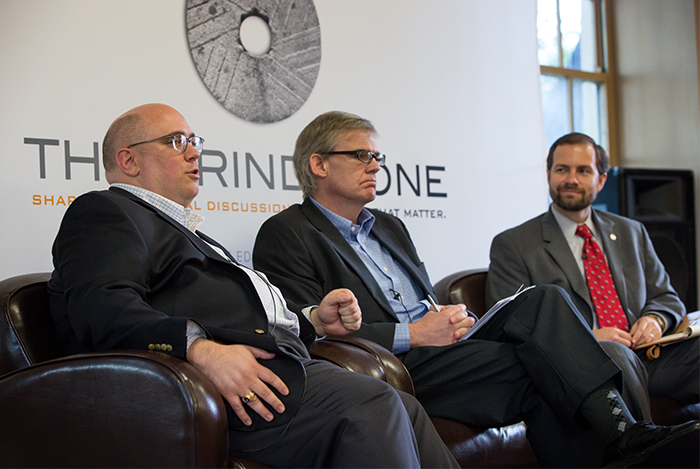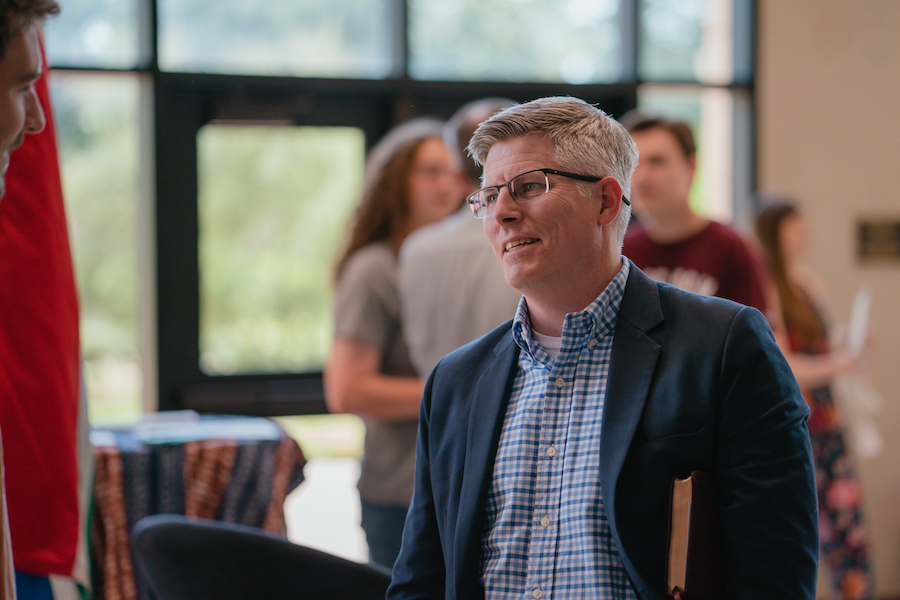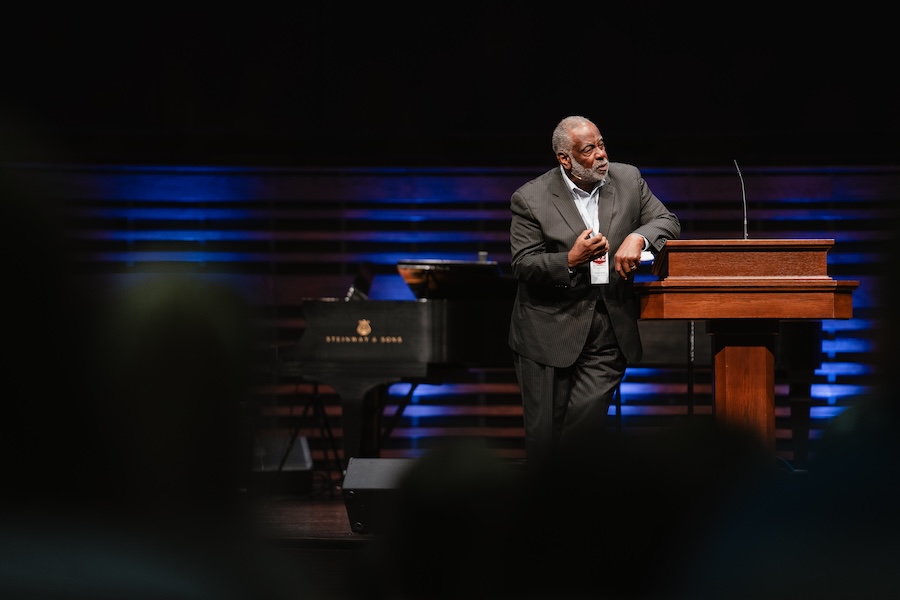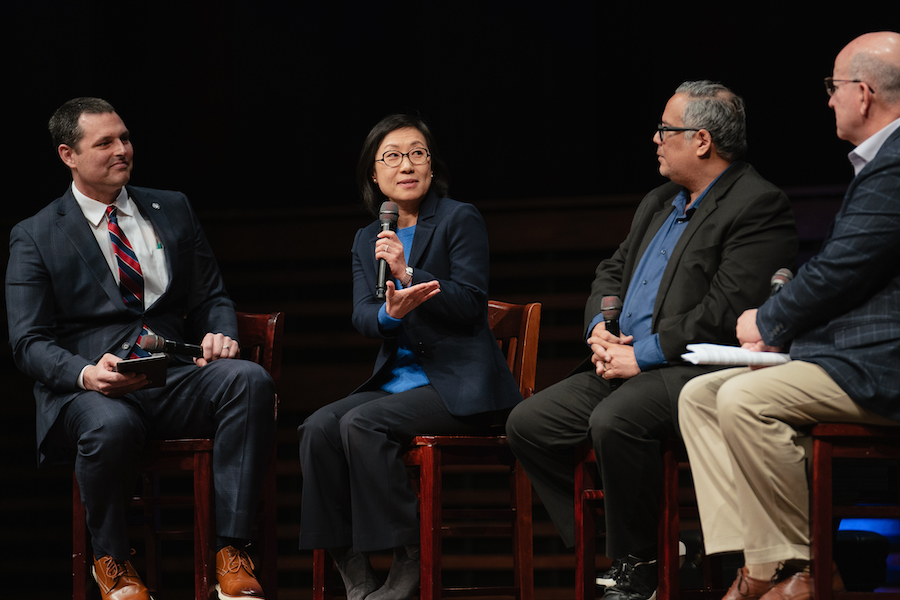Grindstone panel discusses impact of Supreme Court

The first amendment to the U.S. Constitution states that Congress “shall make no law respecting an establishment of religion, or prohibiting the free exercise thereof.” Contained within this statement is the establishment clause and the free exercise clause. According to Trey Dimsdale, associate director of the Land Center at Southwestern Seminary, the manner in which the Supreme Court has interpreted these two clauses as functioning together reflects a sentiment not of freedom of religion, but of freedom from religion.
Speaking as part of a Grindstone panel, April 21, Dimsdale continued, “This has created a highly secularized culture in which people seem to think they should not be exposed to religious symbols and religious people and religious practice in the public square. That’s why you end up with these cases that involve a cross on the side of the highway out in the middle of Arizona that no one ever sees but nonetheless is deemed to be constitutionally impermissible.”
Dimsdale concluded that such a conflation of the two first amendment clauses is inconsistent with what the framers originally intended. The other Grindstone panelist, Patrick Garry, added, “In some ways, the establishment clause has been interpreted to be very sensitive to people who disbelieve or who are offended by religion. But on the other hand, the free exercise clause has not really been interpreted to be sensitive to people who might be burdened by it, unless the law really singles out a religion.”
This topic was one of several addressed at Southwestern’s final Grindstone of the spring semester, which explored the impact of the Supreme Court on churches and society. Another topic of discussion is the impact of the health care act.
Referring to a case involving the religious organization Little Sisters of the Poor, Garry, who serves as professor of law at the University of South Dakota, explained that because organizations such as this are not “houses of worship,” they do not meet the exemption granted by the government and so must provide contraceptive coverage for their employees regardless of their religious convictions. Garry continued, “What I think is the most disturbing aspect of this case is that the congressional law does not require the contraceptive mandate; it was later adopted as government regulations by Health and Human Services, an administrative agency. So it’s really the federal government that decided to go after religious institutions like this.
“They made a very conscious decision to make sure that religiously affiliated institutions had to comply with this. So they have really elevated this contraceptive issue to the point that it has caused a head-on conflict with religion.”
During the Q&A that concluded the discussion, one student asked whether the government should enforce and the Supreme Court should uphold Christian principles within society. In response, Dimsdale clarified that Christianity is not a “mandate religion,” and so it would be inappropriate for the government to do such a thing—no matter how tempting the thought may be.
“The church is the vehicle through which God has ordained the faith to pass from generation to generation, not the state,” Dimsdale said. “The state and the church are conceptually related as having legitimate authority over men, but they are not the same thing.”



